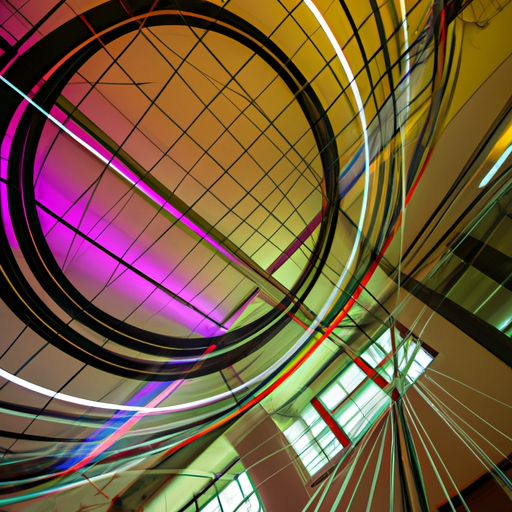The Birth of Conceptual Art: Tracing its Origins and Evolution
The birth of conceptual art marked a significant shift in the world of contemporary art, challenging traditional notions of what constitutes a work of art and revolutionizing the way artists approached their creative practice. This groundbreaking movement emerged in the 1960s and 1970s as a reaction against the dominance of formalism and the commodification of art. Conceptual art prioritized the idea or concept behind the artwork, often rendering the physical object secondary or even dispensable.
The origins of conceptual art can be traced back to various artistic movements and philosophical ideas that preceded it. One of the key precursors was the Dada movement of the early 20th century, which rejected traditional aesthetic values and embraced a radical form of artistic expression. Dadaists advocated for the idea that art should be driven by concept and intention, rather than technical skill or visual appeal.
Another influential precursor to conceptual art was the Fluxus movement, which emerged in the 1960s. Fluxus artists, such as Yoko Ono and George Maciunas, sought to break down the barriers between art and life, emphasizing the importance of everyday experiences and actions. This emphasis on the conceptual aspect of art laid the groundwork for the subsequent development of conceptual art as a distinct movement.
However, it was the work of artists like Marcel Duchamp and his infamous ready-mades that truly paved the way for conceptual art. Duchamp’s notion that the artist’s idea or concept behind a work of art was more important than its physical manifestation challenged the traditional notions of artistic production. His readymades, which were ordinary objects designated as art simply by the artist’s declaration, forced viewers to reconsider the nature of art and the role of the artist.
The evolution of conceptual art was further propelled by the writings and theories of influential figures such as Sol LeWitt, Lawrence Weiner, and Joseph Kosuth. These artists articulated the principles of conceptual art, emphasizing the importance of ideas and language in the creative process. They advocated for the dematerialization of the art object, stating that the concept or idea could exist independently of any physical form.
The impact of conceptual art can be seen in its enduring influence on contemporary art practices. Its emphasis on ideas and concepts rather than traditional craftsmanship or aesthetic appeal opened up new possibilities for artistic expression. Conceptual art challenged the boundaries of what could be considered art, paving the way for a more inclusive and expansive definition of the medium.
In conclusion, the birth of conceptual art can be traced back to various artistic and philosophical precursors. The movement emerged as a reaction against traditional notions of art and brought about a paradigm shift in the way artists approached their practice. Its impact can still be felt today, as conceptual art continues to inspire and provoke new ways of thinking about art.
Conceptual Art: A Revolution in Artistic Expression
Conceptual art, often referred to as the „art of ideas,” emerged as a revolutionary movement in the 1960s, challenging traditional notions of artistic expression and pushing the boundaries of what could be considered art. It was a conceptual shift away from the emphasis on the physical object to the primacy of the idea, sparking a new era of artistic exploration and experimentation.
At its very core, Conceptual art focuses on the concept or idea behind the artwork rather than its physical manifestation. This radical departure from the conventional art-making process shifted the emphasis from craftsmanship and skill to intellectual and philosophical exploration. Artists were no longer bound by the confines of traditional materials and techniques; instead, they were free to explore a vast range of mediums, including text, photography, performance, and even everyday objects.
The origins of Conceptual art can be traced back to Marcel Duchamp, a pioneer in challenging artistic conventions. Duchamp’s famous „readymades,” such as his infamous urinal titled „Fountain,” paved the way for artists to question the very nature and definition of art. By presenting ordinary objects as art, Duchamp provoked viewers to reconsider their preconceived notions and opened the doors for a new generation of artists to experiment with radical ideas.
Conceptual art reached its pinnacle in the 1960s and 1970s, with artists like Sol LeWitt, Joseph Kosuth, and Yoko Ono leading the way. LeWitt, for example, emphasized the idea as the artwork’s essence, often providing written instructions for others to execute his conceptual pieces. Kosuth explored the relationship between language and art, using text in his works to challenge the viewer’s perception.
One of the most significant impacts of Conceptual art was its democratization of the artistic process. By shifting the focus from the object to the idea, Conceptual artists made art more accessible to a wider audience. This opened up new possibilities for engagement and interpretation, as viewers were invited to actively participate in deciphering the meaning and significance of the artwork.
Furthermore, Conceptual art challenged the institutionalized structures of the art world. Rejecting the traditional gallery spaces, artists sought alternative venues for displaying their work, such as the streets, public spaces, and even the internet. This decentralization of the art world allowed for increased diversity and experimentation, giving rise to a more inclusive and dynamic artistic landscape.
In conclusion, Conceptual art revolutionized the way we perceive and engage with art. By prioritizing ideas over physical objects, it expanded the boundaries of artistic expression and challenged long-established norms. Its impact on contemporary art is undeniable, as it continues to inspire artists to push the boundaries of creativity and provoke thought-provoking conversations.
Exploring the Impact of Conceptual Art: Shaping the Contemporary Art World
Exploring the Impact of Conceptual Art: Shaping the Contemporary Art World
Conceptual art has played a pivotal role in shaping the contemporary art world, leaving a profound impact on both artists and audiences alike. This avant-garde movement, which emerged in the 1960s, challenged traditional notions of artistic practice and introduced new ways of conceptualizing and experiencing art.
One of the key impacts of conceptual art is its emphasis on the idea or concept behind a work of art, rather than the physical execution. This shift in focus has broadened the scope of artistic expression and opened up new possibilities for artists to explore. By prioritizing the conceptual framework, artists are able to communicate complex ideas, engage with social and political issues, and provoke thoughtful dialogue.
Conceptual art has also challenged the traditional boundaries of artistic mediums, blurring the lines between different art forms. It has encouraged artists to experiment with unconventional materials and methods, pushing the limits of what is considered art. This interdisciplinary approach has influenced contemporary art practices, giving rise to installations, performances, and digital art, which often incorporate elements of conceptual thinking.
An important aspect of the impact of conceptual art is its role in democratizing the art world. By shifting the focus away from the aesthetic qualities of a piece, conceptual art has made art more accessible and inclusive. It has allowed for a wider range of voices and perspectives to be represented in the art world, challenging the dominance of a select few. Conceptual art has empowered artists from diverse backgrounds to express their ideas and experiences, contributing to a more diverse and dynamic art landscape.
Furthermore, the impact of conceptual art extends beyond the confines of the art world itself. It has influenced other disciplines, such as literature, music, and design, fostering a cross-pollination of ideas and aesthetics. The conceptual approach has seeped into advertising, fashion, and popular culture, shaping the way we perceive and interact with visual stimuli in everyday life.
In conclusion, conceptual art has had a profound impact on the contemporary art world, revolutionizing artistic practices, expanding artistic possibilities, and democratizing the art world. Its emphasis on ideas and concepts has challenged traditional notions of art, opening up new avenues for expression and engagement. The impact of conceptual art is evident not only within the art world but also in wider society, where its influence can be seen in various facets of culture and everyday life.
Conceptual Art: Redefining Boundaries and Challenging Traditional Notions
Conceptual art is a groundbreaking movement that emerged in the late 1960s, redefining the boundaries of traditional artistic practices. It challenged the prevailing notions of what art could be and opened up new avenues for creative expression. Unlike the conventional forms of art, such as painting or sculpture, conceptual art prioritizes ideas and concepts over the physical object or aesthetic qualities.
One of the central tenets of conceptual art is the belief that the idea or concept behind the artwork is its most important aspect. The physical manifestation of the idea can take various forms, including installations, performances, photographs, or even simple instructions. By focusing on the idea, conceptual artists aimed to shift the focus from the object to the intellectual engagement and critical thinking it provokes.
This emphasis on the idea rather than the visual appearance of the artwork allowed conceptual artists to challenge the traditional notions of aesthetics and craftsmanship. It blurred the boundaries between art and everyday life, questioning the art object’s value and the role of the artist as a skilled craftsman. Artists began to explore unconventional materials and methods, often incorporating found objects or incorporating language, texts, and symbols into their work.
Conceptual art also questioned the traditional role of the viewer. Instead of passively appreciating an artwork, viewers were invited to actively engage with the ideas and concepts presented. This shift in perspective encouraged a more democratic and participatory approach to art, challenging the elitism often associated with the art world.
One of the most influential conceptual artists, Marcel Duchamp, paved the way for this movement with his Readymades – ordinary objects that he selected and designated as art. By presenting everyday objects as art, Duchamp challenged the definition of art itself, sparking debates about the nature and purpose of artistic expression.
The impact of conceptual art can still be felt in contemporary art practices. It continues to inspire artists to push the boundaries of creativity and challenge traditional forms. By focusing on ideas and concepts, conceptual art has expanded the scope of artistic expression, allowing for a broader exploration of philosophical, social, and political themes.
In conclusion, conceptual art is a revolutionary movement that has redefined the boundaries and challenged the traditional notions of art. By prioritizing ideas over physical objects, it has opened up new avenues for creativity and expanded the scope of artistic expression. Its impact can still be seen in contemporary art, where artists continue to explore and push the boundaries of what art can be.



